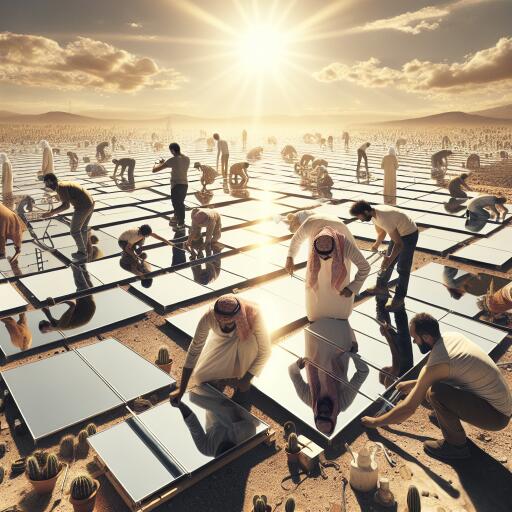
Climate crisis: Using mirrors in the fight against extreme heat
In many regions around the globe, the battle against rising temperatures due to climate change has become a matter of survival. Innovative solutions are being devised and implemented to combat the scorching heat that transforms homes into unbearable hotboxes, especially in areas hit hardest by extreme weather conditions.
In Freetown, Sierra Leone, residents of the Kroo Bay settlement are finding respite through an ingenious intervention. The sweltering heat inside homes during the dry season has long been a grueling challenge. However, the tide is turning with the installation of reflective panels on some of the houses in this community. These panels are not just any ordinary addition; they are designed to significantly reduce indoor temperatures, making homes more livable even in the peak of heatwaves.
The initiative, led by Peter Dynes of MEER (Mirrors for Earth’s Energy Rebalancing), a Belfast-based organization, is part of a concerted effort to adapt to the rapidly intensifying climate crisis. Through collaboration with local authorities, Dynes and his team are rolling out these reflective panels, which boast a highly reflective surface made from recycled materials. By reflecting sunlight away from buildings, the panels can lower indoor temperatures by more than 6 degrees Celsius, offering a much-needed shield against the heat.
This solution has come as a blessing for residents like Khadija Kamara, who have suffered through the unbearable heat. The installation of the reflective panel on her home has brought a noticeable difference in the indoor climate. While the global community grapples with the broader implications of climate change and seeks sustainable solutions, the tragedy that befell Kamara, losing her six-month-old son Ibrahim to a heatwave, underscores the urgent need for immediate, localized interventions that can save lives and improve living conditions.
The concept of using reflective materials to combat heat is not entirely new but applying it in such a direct and impactful way, particularly in vulnerable communities, highlights a creative approach to climate adaptation. As the world continues to warm, projects like these offer a glimmer of hope and a potential blueprint for other regions facing similar challenges. By turning to innovative technologies and materials, there’s a path forward to mitigate the harshest effects of climate change on our daily lives and environment.
The work of organizations like MEER, in partnership with local governments and communities, exemplifies how global and local efforts can converge to tackle environmental crises head-on. The successful reduction of indoor temperatures in homes using reflective panels is a testament to the power of simple, scalable solutions in the fight against climate change.





Leave a Reply